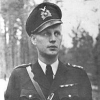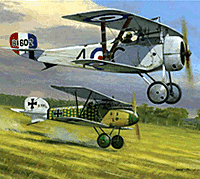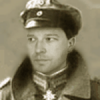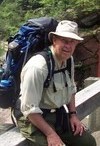-
Posts
2,440 -
Joined
-
Last visited
-
Days Won
1
Hasse Wind last won the day on February 11 2012
Hasse Wind had the most liked content!
Recent Profile Visitors
9,460 profile views
Hasse Wind's Achievements
-
Wulfe and Raine, excellent entries from both of you! Really enjoying the stories. Chives, welcome to DID! A great introduction chapter for your pilot. Lederhosen, I hope it's a mild form of covid. Doctors of 1916 will have some trouble with the diagnosis though... *** Escadrille N.23 went straight into action after reaching their new aerodrome at Vadelaincourt. The German and French air services had both been concentrating large numbers of formations in the sector, and air activity was considerably heavier than what Auguste had been used to in their previous locations. However, trusting in their Nieuport scouts, the pilots of the escadrille were determined to chase the boche machines out of the skies. On April 9, Capitaine de Beauchamp led his flight of six Nieuports to attack a group of German Aviatik two-seaters that had been bombing French positions around the city of Verdun. A battle ensued, and Auguste, following the captain, targeted one of the Aviatiks. Beauchamp made a first pass at the German machine, scoring some hits. He made way for Auguste, who quickly fired a long burst from his Lewis gun into the cockpit and engine of the Aviatik. Smoke erupted from the machine, a clear sign that the German two-seater would soon go down. As Auguste closed in for the kill - his first - the German observer desperately returned fire. A bullet smashed through the windshield of Auguste's Nieuport and hit him straight in the head. Auguste was already gone when his machine began to spiral out of control and finally crashed down on the outskirts of Verdun. He received a full military burial the next day, becoming one of the millions of men who lost their lives in the War to End All Wars. On his simple cross, the words "MORT POUR LA FRANCE" marked his final resting place. *** And so ends the career of sous-lieutenant Auguste Alaric Besson! Just when things were getting interesting! It's totally my own fault, of course. I should have been more careful. Dead is Dead.
-
The War Diary of Auguste Besson, Escadrille N.23, part 11. Throughout March, while the battle raged at Verdun and the fate of our nation hung in the balance, we maintained a regular schedule of patrols in our quiet sector of the front. As days and then weeks went by, it became evident that the enemy had weakened his presence there. We had very little hostile activity in the air, and nothing happened on the ground either, with the exception of a few harassment barrages every now and then that were intended to keep up the appearance of a war being fought. One by one, more of our escadrilles were being sent to bolster the defenses of Verdun – but not us! We seemed destined to become forgotten in a sideshow theatre of war, infuriatingly close to the action at Verdun, and yet so disappointingly far from that city of heroes. This was beginning to have a negative impact of the morale of our men, and grumblings about the situation were commonly heard. Alas, there was nothing we could do while the army headquarters saw it fit to keep us where we were. Then, on March 25, Captain de Rochambeau summoned us for a special briefing. New orders had been received from the Fourth Army – the escadrille was to be transferred to the Vadelaincourt aerodrome, a mere 15 km from the front at Verdun, by the end of the month! This news was welcomed by cheers and shouts of ”Vive la France!” So eager were we to do our part in the struggle at Verdun that even the sternest of us could not restrain their emotions. Preparations for departure were made at a feverish pace, and when our column of cars and lorries finally began to lumber forward on its 100 km journey to Vadelaincourt, we were in high spirits, though also feeling sombre about the situation. For if things had been calm, almost peaceful, in our old sector, that would no longer be the case at Verdun. Eventually we reached the road that runs from Bar-le-Duc to Verdun, a distance of about 70 km. This road became better known as ”La Voie Sacrée”, the Sacred Way, during the battle. It was the only road in the region wide and reliable enough to carry all the heavy traffic that was vital to supplying our forces at Verdun. All horse transports and troop movements by foot on the road had been forbidden since the end of February, leaving it open for motor vehicles only. Our column reached Bar-le-Duc via the road from Ligny-en-Barrois, and then began proceeding towards Verdun among countless other cars and lorries. I had never witnessed such an incredible collection of various types of motor vehicles concentrated in one place at the same time. It seemed to me like a glimpse of mankind’s mechanized future, dominated by machines! Traffic was kept in two lines, one going to Verdun and the other back to Bar-le-Duc. Occasionally we passed by vehicles that had suffered mechanical breakdowns. They were simply pushed to the side of the road to wait for repair crews so that the constant flow of men and materiel would not be interrupted by anything. A narrow-gauge railway had also been constructed parallel to the road to further improve the logistics of the troops at Verdun, and there was an additional standard-gauge railway being built in order to reconnect the city to the national railway network. As we proceeded towards Vadelaincourt, we saw large groups of men working along the road, repairing the damage it had suffered from constant heavy traffic. Many of these men were Annamites from our Far Eastern colonies, hired to do work in labour battalions in Europe. Every now and then we also spotted men in boche uniforms with shovels in their hands – prisoners of war, doing the same work as the Annamites. Compared to the Asians, these men looked dirty and unhappy. Night was already falling when we reached Vadelaincourt. It was a small commune about 15 km southwest of Verdun and more or less insignificant before the war. However, the German offensive had suddenly turned the place into a hub of activity. Aerodromes had been rapidly constructed in the area to house all the men and machines that were being sent in increasing numbers to help defend Verdun in the air. In the fading light, we saw big Bessonneau hangars, constructed of timber and canvas for easy transportation, lining the airfield. There was no time to waste, and after stretching our legs for a bit and getting our bearings, we all joined in with the ground crews to help them in making the escadrille operational again as quickly as possible. That night, we were too busy to sleep and took full advantage of the cover of darkness to avoid any potential observation of our actions by the enemy. The front was so close to us that we no longer had the same luxuries as we had had in our previous aerodromes. As dawn approached, we could hear the guns booming in the not-so-far distance. TO BE CONTINUED...
-
Unfortunately nothing helped, so I had to reinstall WOFF and then add Recon Wars on top of a fresh install. This time everything seems to be working as it should and I haven't received any error messages so far. Fingers crossed! Now I have two options: either recreate my DID pilot and continue his career, adding the hours from the previous install to his log, or if the powers that be won't allow it, I'll have to start a new pilot.
-
Thanks for the suggestion. The problem definitely started with Recon Wars. I tried it again and excluded the files/folders, but the problem persists. I guess complete reinstall is the next option on the menu. But I have this nasty feeling that my pilot's campaign file has now become corrupted, and maybe even a reinstall won't help with it.
-
Albrecht, what a great story! Raine, good to see Hawkwood finally getting a well-deserved promotion. As a "temporary gentleman", some things should be easier for him now. A fine read! The real world seems to have gone crazy again. Some escapism in the form of this flight sim hobby is more than welcome, though I confess having a somewhat uneasy feeling writing about past wars when a real one is being now fought so close to my homeland. Anyway, here's the latest chapter from Auguste! The War Diary of Auguste Besson, Escadrille N.23, part 10. The German offensive at Verdun began after the massive preparatory bombardment ended in the evening of February 21. We were not in the Verdun sector, but naturally the battle attracted most of our attention. Nothing whatsoever was happening in our corner of the front, and we were anxious to hear any news from the fortress city on the Meuse. There were hopes that the boche attack would be stopped right away before any serious progress could be made. After all, Verdun was heavily fortified and could be expected to hold against heavy attacks. However, a few months earlier we had witnessed from the air how artillery pieces had been transported from the city for use in the Champagne offensive. The effects of this weakening of the defenses became evident after three days of fighting, when the mighty Fort Douaumont fell into enemy hands. This blow was a huge shock to everybody, and we began to feel increasingly frustrated by being stuck in a sector that was missing all the action. A few days later our former army commander, General Pétain, was appointed to lead the defense of Verdun. We knew the General was a highly competent officer, and believed that if anybody could put a stop to the German advance, it was surely him. By the first week of March, it became obvious that the danger of the immediate collapse of the Verdun defenses had passed. Stiff resistance by our brave poilus had turned the boche offensive into yet another massive battle of attrition. Many escadrilles were also being sent to bolster the city’s defense – but not ours! We could see even the Captain was frustrated by this state of affairs, but there was nothing we could do about it. Our escadrille remained attached to the Fourth Army, which was not responsible for the defense Verdun. We also understood that it was not possible to strip the whole Western front of our aviation units and send them all to Verdun. It would have been logistically impossible and would have also endangered the defenses of other sectors of the front. Still, our frustration over the situation was palpable and seemed to became worse with each passing day the fighting went on at Verdun. The only exciting thing to happen to us in early March was the delivery of the first of the Nieuport 11 C.1 scout machines. We had been expecting this new type for some time, and were eager to put it to good use against the boche. This Nieuport, nicknamed the Bébé, was a small-sized, fast and extremely manoeuvrable sesquiplane design powered by an 80 hp Le Rhône rotary engine and carrying one British-made Lewis machine gun mounted on the top wing, firing over the propeller. Performance-wise, the Bébé was greatly superior to the Fokker monoplanes in every way, and we were confident that it would allow us to finally achieve air superiority over the front. We did not have to wait for long to have success with the new machine. In his second flight with the Bébé, Captain de Beauchamp surprised and shot down a lone Aviatik two-seater. The enemy machine came down quite close to our forward positions and we were hoping to capture its crew as prisoners of war, but eager poilus shot the unlucky Germans dead before we managed to contact them. It was a disappointment, but we could hardly blame the infantrymen, for the Aviatik had been guiding the fire of boche batteries upon their necks. The Captain’s success was celebrated that night and we were all eagerly waiting for more Bébés to arrive so that more of us would be given the opportunity to use this deadly new weapon against the enemy. Unable to directly support the defenders of Verdun, we were determined to make life miserable for the boche in our front. TO BE CONTINUED...
-
End of February 1916 Stats: Sous-lieutenant (in-game sergent) Auguste Alaric Besson, Escadrille N.23, Luneville aerodrome, Nieuport 10 & 12. 33 missions 47.72 hours No claims or victories. 1 wounding The War Diary of Auguste Besson, Escadrille N.23, part 9. Time passed slowly at the Chalons military hospital. Fortunately my head injury did not show any signs of infection and steadily improved. However, effects of the concussion prevented me from flying for several weeks. The only entertainment I had was thanks to my comrades from the escadrille paying me the occasional visit. They even managed to smuggle me a bottle of Spanish red wine – an amusing reference to my nickname. While I was away, the escadrille received a new type of machine – the Nieuport 12 two-seater. With its excellent speed of 150 km/h, a powerful 110 hp Clerget rotary engine, a rear-facing Lewis machine gun for the observer on a mount designed to provide an improved field of fire, and the possibility of adding a forward-facing Lewis gun on the top wing for the pilot, the Nieuport was considered to offer more than adequate protection from the menacing boche Fokker monoplanes. I returned to the escadrille at the end of the first week of February and was soon test flying the new machines. Despite the occasional headache, and a sore spot on my scalp, I felt well enough for combat duties again. With our combination of Nieuport 10’s and 12’s, we knew the escadrille was now equipped better than ever and fully capable of bringing the fight to the enemy. Weather became terribly bad again in the middle of the month, so it was a relatively quiet period for us. There was also time for some leisure activities, the most memorable of which was a football game against the fellow aviators of Escadrille C.43 – sadly, we lost the game 5–4, though not without putting up a good fight first! I was not able to play for fear of injuring my still sore head again. Considering that I have never been much of a football player, I doubt my modest efforts would have influenced the outcome. Everything changed on Monday, February 21. The meteorologists had finally predicted us some decent flying weather, and we were prepared to fly reconnaissance missions to find out what the boche had been up to in our sector in the preceding days of rain and high winds and poor visibility. After 7 o’clock in the morning, a deep rumbling sound suddenly became audible in the distance. It resembled thunder, except that it was an almost perfectly steady and constant noise, which thunder never really is, even during the worst of storms. Everybody gathered outside to listen. A few men suggested it was indeed thunder, but no one truly believed that. The sound was coming from the direction of Verdun – a distance of about 100 km from our aerodrome, as the crow flies. No, it was clearly an artillery barrage – and a massive one at that. We had no information about what was happening, and flew our morning flights normally. However, I did have a bad feeling about the whole situation. I had seen and heard artillery fire many times before, but this barrage was something entirely different in its sheer intensity. It was still going on when we returned to the aerodrome. By then, the army headquarters had confirmed our suspicions in a telephone call to the Captain – the barrage was indeed happening at Verdun, evidently in preparation for a massive German attack. We flew no more missions that day, as things were quiet in our sector and the boche had not made any suspicious moves during the days of bad weather. Most of us pilots gathered outside to listen to the steady rumble of guns. To me, it was a deeply surreal feeling to be standing there, trying to imagine what it must be like to face such fire in person. Then, after about ten hours of constant shelling, the noise stopped. The silence that followed felt dreadfully ominous to me. A hundred kilometres from our peaceful airfield the future of France would then be decided. TO BE CONTINUED...
-
Oh damn it, Mfair - I didn't notice that Gallagher had been killed! Sorry to hear that, he was off to such a good start in this DID. Better luck with you new pilot! Paroni, what a great photo of those infantrymen helping the aviator! *** The War Diary of Auguste Besson, Escadrille N.23, part 8. New year began with poor weather, but we still kept up our regular schedule of patrol missions over the front for as much as the conditions permitted. On January 3, we received orders from the army headquarters: our escadrille would be transferred from the Second Army to the Fourth, which was holding the Reims front on our left flank. We would also relocate to the Melette aerodrome, which was located about 15 km west of our field at Somme-Vesle, closer to the cities of Reims and Chalons and the river Marne. One of our jokers immediately suggested that the reason for the transfer must have been General Pétain’s inspection back in December: having personally witnessed our escadrille, he wanted to get rid of us as soon as possible. I found this hilarious, but Captain de Beauchamp was not so amused. The actual reason was much more mundane: the Fourth Army had received a new commander, General Henri Gouraud, the one-armed hero of the Dardanelles, and was in need of additional air units. Since it was such a short trip to Melette, we simply flew our machines over there while the ground crews took care of the rest. Melette itself was another medieval village typical of the region with very little to distinguish it from Somme-Vesle or any other similar community near Chalons. There was a field, brick buildings for housing us, and tents and huts for the machines. Moving over was therefore a simple affair for us pilots. On January 20, a flight of our Nieuports was patrolling the front close to Reims near the border between our Fourth Army and the Fifth to the west of us. Visibility was rather poor, and we were flying at about 2000 metres. Boche anti-aircraft fire was surprisingly heavy on that sector, and suddenly a shell exploded close to my machine. I remember a flash, after which everything went black for a while. I lost consciousness for a moment – it could not have been for more than a couple of seconds, or I would have surely lost control of my machine and spiralled down to my death – and when I came to I felt a pain on my left temple, my ears were ringing, and my vision was blurry. My pilot’s goggles were also partly covered in blood, which further reduced visibility. Despite everything I managed to regain control of my machine, and ignoring the pain, turned my head left to observe what damage, if any, my Nieuport had suffered. I could see several tears in the fabric of both wings, but there was no obvious of serious damage to the structures holding the wings together. Nevertheless I was in a very dangerous situation, not knowing how badly my head had been hurt or whether I would be able to stay conscious for much longer. My comrades had seen that I was in trouble, and the Marquis (Jean Casale) was flying quite close to me on my left wing. I motioned with my hand that I was injured and had to abandon the mission. Then I slowly turned my machine back towards Melette, trying to avoid putting too much stress on the damaged left wings. The cold weather and rain actually seemed to help me clear my mind, though they also did much to exacerbate then pain in my head. I could feel, and see, that I was bleeding pretty badly. Hoping and praying that my luck would hold I flew back towards Melette. It was not a long flight – only about 20 minutes – but in my weakened condition it felt like hours. When the field and its hangars became visible in the drizzle, I felt a sudden surge of renewed strength – maybe I would actually survive! I have no clear recollection of how I managed to land my plane in the end, but I was later told that it was a good landing and that I was found in the cockpit, bleeding and unconscious. The medics gave me first aid on the field, after which I was taken to a military hospital in Chalons, where the surgeons sewed my scalp back together. Apparently I was indeed lucky, for if the shell fragment had hit my head in just a slightly different angle, it would have split my skull open. However, the headaches resulting from the injury made sure that I did not consider myself overly lucky during the three weeks I had to stay at the hospital. TO BE CONTINUED... Auguste's career very nearly came to an end in this encounter with the boche flak! It's no fun trying to made it back to your own lines when the screen is red with blood and you can see the health of your pilot steadily dropping down! I took a screenshot too, but must have pressed the wrong button because it wasn't there. So Auguste is now out of action until early February, in-game time.
-
Raine, Hawkwood's story reads like a proper novel! Really enjoying it. MFair, congrats on the victory! It's getting dangerous out there, so be careful. Albrecht, I see Herr Boelcke will have some serious competition with his Dicta. Fine work. Paroni, the quiet times will definitely come to an end in 1916, unless something has been changed in the sim in one of the recent patches. Seb, Andrews is making short work of the boches! I almost feel sorry for them. Albert, a fun read about Sid's little adventure in Paris. It's definitely a different world out there, compared to the front. *** All of you who are struggling with your claims, may I remind you of the following organization responsible for the decision making process: Made by our resident Gong Fairy, Lou, many years ago.
-
The War Diary of Auguste Besson, Escadrille N.23, part 7. December began with poor weather that prevented us from flying. We took advantage of this break by working on our machines and making sure everything was in the best possible shape for continuing flight operations when the weather permitted them again. It rained and snowed a lot, but there were also some bright and beautiful days mixed in with the bad ones. However, the clear days were usually very cold and windy, which made flying our machines rather uncomfortable – there was a great demand for warm winter clothing. Fortunately I had been receiving regular deliveries of woollen clothes from my mother and sister and also Marie, so I was well prepared for the change in weather several weeks before it actually happened. In fact, I had so many extra pairs of woollen gloves that I was able to share them with the rest of the escadrille. I think it is impossible, or at least very difficult, for laymen to understand just how cold it can get in an open cockpit when you are flying at an altitude of 3000 metres with strong winds surrounding your whole body in freezing air! The greatest excitement we had in December was the visit by the commander of the Second Army, General Pétain, in the middle of the month. The front was quiet, so the general had time to tour his sector and make inspections of his forces and their positions, including the aerodromes of all the escadrilles attached to the Second Army. Pétain had a reputation as a demanding and competent general officer who was also interested in the well-being of the ordinary soldier – a trait that was unfortunately lacking in many other commanders. We were usually pretty relaxed about military formalities in our escadrille. There was no constant saluting or rigid protocols required by the commanding officer – after all, we all flew and lived together as a close-knit community. However, we could not receive an army commander in such fashion! So we practiced some drill and made sure our uniforms were in tip-top shape for the inspection. Since our men came from various regiments and brought their own uniforms with them, we were a rather colourful band of brothers – ”a d----d camp of gypsies” according to Captain de Beauchamp. The day of the general’s visit was marred by extremely bad weather, which alternated between rain and snowfall. Consequently the inspection of our parade formation and the awarding of decorations to deserving individuals by the general was performed in a shortened form. Then the general toured our facilities and inspected our machines. He seemed very interested in the Nieuport and asked several questions about the sesquiplane’s abilities and their best use in combat. General Pétain’s visit certainly left a positive impression on us and made us feel good about serving under a general who seemed genuinely interested in military aviation. I had been hoping to get some leave for Christmas and spend the holidays with my family in Cherbourg. Unfortunately it was not possible. Men who had been serving longer than me on the front took precedence in leave arrangements, and even they were not always so lucky. Overall, the whole system of getting leave was rather strict in our army, which I felt had a negative impact on the morale of the men. Fortunately one of our pilots, Jean Casale, Marquis de Montfort, a young nobleman from Corsica, had managed to acquire a crate of excellent Martell cognac for Christmas. We made sure these high quality spirits were not wasted during the holidays! We ended the year by flying a long patrol over the front, and succeeded in spotting a pair of boche Aviatik two-seaters that promptly turned tail and fled into a cloud formation. Despite our best efforts, we were unable to locate them again. Such unsatisfactory encounters were not rare during the dismal winter months. The year 1915 had been a challenging one for us. We had had some successes and had managed to build up our escadrille’s strength with new pilots and machines, but the general situation along the Western front, or on any front, was far from great. At best, it could be said that we were holding our own against the enemy. But victory seemed to be far away, and all hopes of the war coming to a speedy end had been frustrated by the failed offensives of the year. TO BE CONTINUED...
-
I see two of our brave aviators have been rewarded by the generous Gong Fairy! Well done, gentlemen! And there have been casualties too. It's always a bummer to lose a DID pilot, especially when you've invested a lot of time into writing his story and flying his missions. Better luck with your new pilots, guys! I've noticed that Archie can be pretty nasty with the DID settings we're using now. There's a very real risk of getting blown to smithereens when you fly through a heavy concentration of flak. So far, this has been the biggest excitement in Auguste's DID career. German airplanes seem to be avoiding contact with him. But I think that will change in the coming months, with the battle of Verdun and everything. Once again we have some excellent writers participating in this DID campaign. So keep the stories coming, it's always nice to read them with a cup (or two) of hot tea!
-
The War Diary of Auguste Besson, Escadrille N.23, part 6. In November, our escadrille was comprised of twelve Nieuport sesquiplanes. When I joined in the summer of 1915, we had had only eight machines. A major effort to increase the number of escadrilles and their size had been underway for many months and was bearing fruit by the end of 1915. We knew that we outnumbered the German air service, though the enemy seemed to have a technological advantage with their Fokker monoplanes, which were armed with machine guns capable of firing safely between the spinning propeller blades. In late 1915, the Fokkers were being seen in ever growing numbers along the front, scoring many victories against poorly armed and ungainly British and French observation two-seater machines. A major tragedy struck our escadrille on November 22. Captain Schlumberger was test flying a new two-seater machine, the SPAD A.1, with observer Gaston Montézuma. For some reason – probably a mechanical failure in this notoriously unreliable SPAD design – they were forced to land near the frontlines and were subsequently killed by machine gun fire coming from German positions. Their loss came as a great shock to everybody, and the memorial service held in the Châlons cathedral was a very solemn and moving ceremony. Soon after, Captain Louis Robert de Beauchamp took over as the commanding officer of the escadrille. He was also a very competent veteran aviator, having joined the air service already in 1912. Until this incident, we had been spared from suffering heavy casualties. Hence the loss of two brave men on the same day was keenly felt by everybody in the escadrille. Combined with bad news from practically every front and the lousy winter weather, this resulted in a rather gloomy atmosphere in our unit. However, this only made us more determined to prevail and get revenge on the boche for all the harm they had done to our people in the Great War. If I had to name a specific moment when there was a loss of innocence in the air war and everything began to turn into a bitter struggle for ultimate victory (losses be damned!), I would say it was that fateful day in November 1915. TO BE CONTINUED...
-
The War Diary of Auguste Besson, Escadrille N.23, part 5. We had barely reached our quarters at Vitry-le-François when we were ordered to the depot’s field to begin our training. The Nieuport 10 was a very different beast compared to our old Parasols. It was a sesquiplane design, meaning it had a normal-sized top wing but the lower wing was considerably narrower. This made the plane lighter and improved both its manoeuvrability and the downward visibility from the cockpit. We were pleasantly surprised by the Nieuport. It was easy to handle and responded well to the movements of the controls, whereas the Parasol was overly nervous and required a constant full effort from the pilot to maintain a steady course, which made flying it an exhausting business. The Nieuport could be armed with a British-made Lewis machine gun that was attached over the top wing. This arrangement made it possible to fire forward over the spinning propeller. Unfortunately the system was far from perfect. To replace an empty magazine the pilot had to stand up in the cockpit to reload the gun – understandably a challenging feat to accomplish in a rapidly moving airplane! Our instructor at the facility turned out to be none other than Lieutenant Mangin, the injured pilot I had met at the Paris surgical hospital! However, he was no longer a lieutenant, but a captain, having received a promotion recently. He was employed as an instructor and a test pilot, which gave him the opportunity to acquire first hand experience of all of our latest machines in development. The crash had left him with an injured leg, so he walked around with a slight limp, but this had no impact on his performance in the cockpit. Most of us could only marvel at his supreme skill in handling the Nieuport! In the evenings, I had long conversations with Mangin. Despite his injury, the war had treated him well and offered him a chance to get promoted at a much faster pace than would have been possible in the peacetime army. For a man so obviously in love with aviation, it truly was the perfect arrangement. We completed our training at a very rapid speed. This was not really a problem, because the Nieuport had the same engine as the Parasol, so we were already familiar with the most complex part of the machine. There was a reason for the hurry – on September 25, our armies attacked on the Reims front, and there was a great demand for air support. Meanwhile, our escadrille was renamed N.23, to reflect the fact that we were now equipped with the Nieuport 10. After some initial successes, the new offensive also ground to a halt. No matter what the army tried, the enemy lines could not be broken. On October 3, rapid breakthrough attempts were abandoned and a battle of attrition began. Our escadrille was in the thick of it, flying every day over the battlefield to provide support to the poilus struggling forward in the autumn mud. However, heavy rainfall often made any flights impossible. The men in the trenches were not so fortunate, and had to endure the worst of it without any chance of relief. By comparison, we pilots were fighting the war from a privileged position, being able to retire into our houses and the comfort of our beds after the day was over. October 1915 was a disappointing month for us. The fighting in our own sector was not making any progress, despite heavy casualties. The enemy took full advantage of the higher ground they were occupying and their reconnaissance machines were also able to keep an eye on our movements, in spite of our efforts to achieve superiority in the air. Clearly, the offensive had not come as a surprise to the boche. In addition, there was a steady stream of bad news from the other fronts. Things seemed particularly bad in the East, where the Central Powers were dealing heavy blows to the Russian Empire. We often discussed the prospects of the war in the spare time we had between missions – sometimes a lot of it, when the weather made flying impossible. As November arrived, the offensive actions in our sector finally came to an end for the winter. This also meant an easier schedule for the escadrille, for flying became increasingly difficult in the harsh weather conditions. TO BE CONTINUED...















